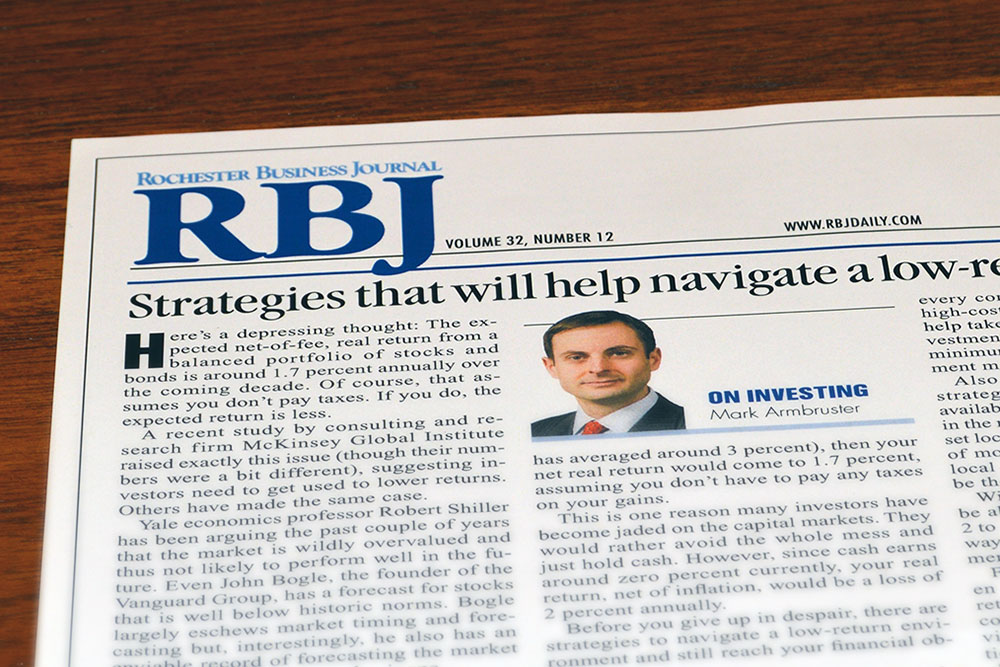Mark Armbruster
VIEWPOINT
With winter finally winding down and the holidays squarely behind us, I’d like to say something very Grinchy: It is actually better to receive than to give. This may sound like blasphemy, particularly in Rochester, a city renowned for its philanthropy. But I’m not talking about charitable giving. I’m talking about your investment portfolio.
Too often, investors make decisions about their money without regard to expected return and the costs involved in earning that return. It is important to focus on earning the best possible return, but it is equally important to focus on keeping that return.

Unfortunately, it is rare for investors or even investment professionals to take that additional step. The costs inherent in the investment process can be steep, in some cases confiscating the majority of your return. For example, several years ago I did a trade for a client who required that I use his broker, who was a friend of his. It was a large trade, but very simple. I sold $1 million worth of an exchange-traded fund and immediately purchased $1 million of another, similar fund. The brokerage commission for these two trades was $10,000. The same trades, executed at a discount brokerage firm, would have cost less than $20. That friendship cost the client a bundle.
Unfortunately, this is not a rare occurrence. Recently I spoke with an investor who has an investment portfolio worth about $2.5 million. He is paying investment management fees of 2 percent annually. I pointed out that his fees seemed quite high for a portfolio of that size and showed him how he could cut his fees by half. Ultimately, he decided not to make any changes because his adviser belonged to the same country club and it might have created an awkward social situation. Using a very modest return assumption, I calculated that paying the higher fee level will cost the investor more than $1 million in lost earnings over the next 20 years….

